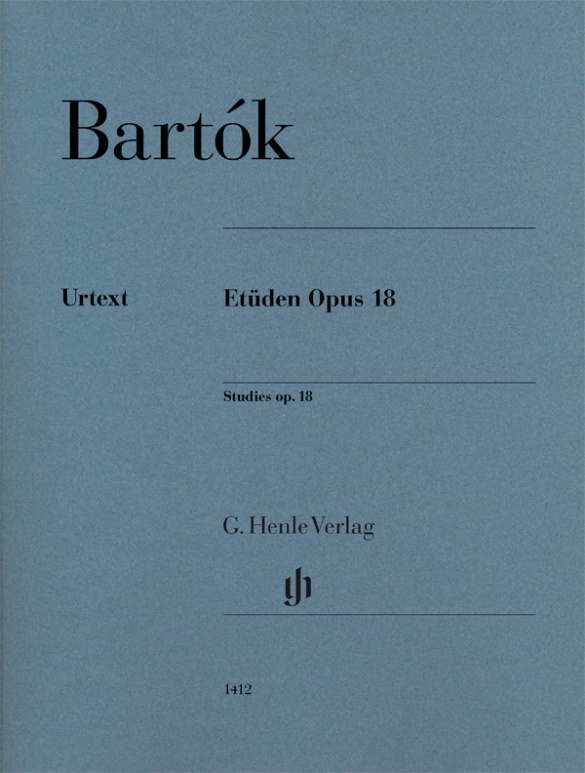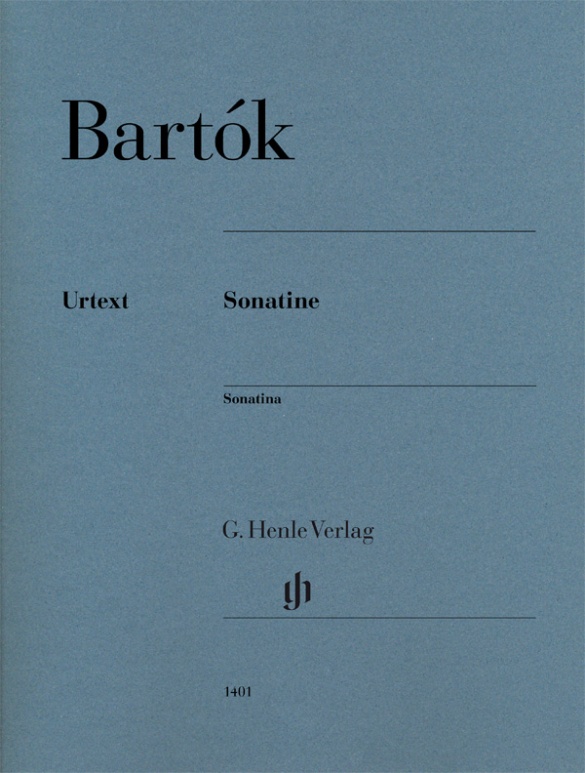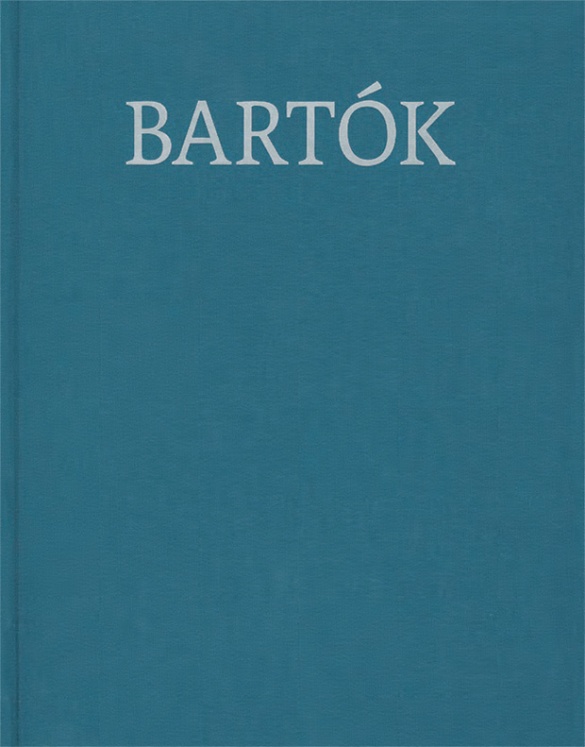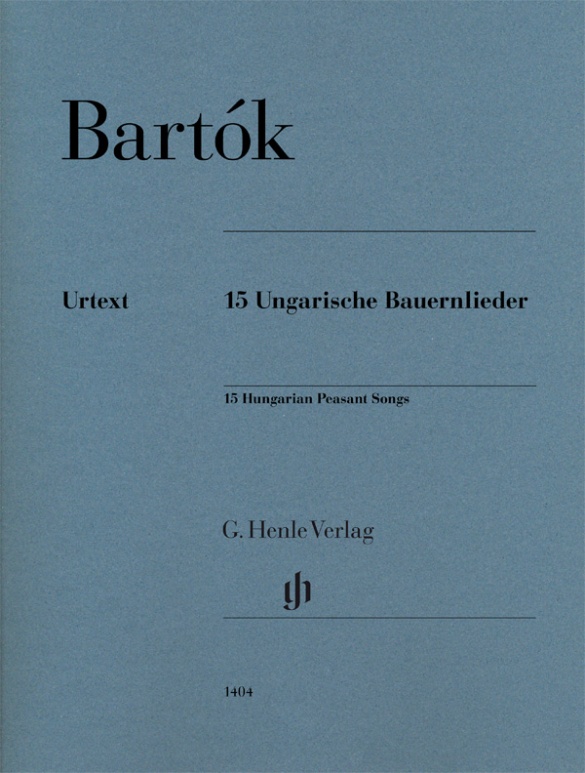

Béla Bartók
15 Hungarian Peasant Songs
In a note for the planned first edition of his Hungarian Peasant Songs in 1914, Bartók wrote that “the melodies published here are folksongs in the truest sense of the word; more precisely, peasant songs”. Bartók initially withdrew this work from publication, however, and added new pieces to it using folk music he had collected in the meantime. The first edition was only finally published in 1920. The Bartók scholar László Somfai explains the work’s complicated genesis in his preface. The comments at the close of this edition include important indications regarding performance practice derived from the two recordings that the composer made of several of its pieces in 1927 and 1936. The musical text here follows that of the corresponding volume of the Bartók Complete Edition that is currently in preparation. This is yet another highly popular Bartók work on offer from G. Henle Publishers!
Content/Details
(Explanation)
About the Composer
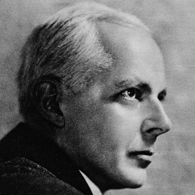
Béla Bartók
This composer, who numbers among the most important musical figures in the first half of the twentieth century, is known principally for his research into Hungarian folk music, the elements of which he incorporated into his style. His broad oeuvre includes numerous works for orchestra, piano, and chamber ensembles, as well as choral music; songs with piano accompaniment; and an opera.
| 1881 | Born in Nagyszentmiklós on March 25. First piano instruction from his mother. |
| 1893–ca. 1896 | Piano studies with László Erkel in Pressburg (Bratislava). |
| 1899–1903 | Studies piano and composition at the Budapest Academy of Music. Symphonic poem “Kossuth” in 1903. |
| from 1905 | Together with Zóltan Kodály he begins scientific field research into Hungarian folk music and thereby refutes conventional notions. He becomes acquainted with the music of Debussy. |
| 1905–07 | Suite No. 2, Op. 4, for small orchestra. |
| 1907–34 | Professor of piano in Budapest. |
| 1908–09 | “For Children,” 85 transcriptions of folk songs for piano, later only 79. |
| 1915–17 | String Quartet No. 2, Op. 17, with percussive playing techniques. |
| 1917 | Premiere of his ballet “The Wooden Prince.” |
| 1918 | Premiere of “Bluebeard’s Castle,” Op. 11 (composed 1911), partially based on the sounds of French music. |
| 1920 | Improvisations on Hungarian Peasant Songs, Op. 20. |
| 1926 | Performance of the pantomime “The Miraculous Mandarin.” Piano cycle “Out of Doors.” |
| 1926–39 | “Mikrokosmos” for piano (six volumes). |
| from 1934 | Editor of the complete edition of Hungarian folk music. |
| 1936 | Music for Strings, Percussion and Celesta as avant-garde work. |
| 1937–38 | Concerto (No. 2) for violin and orchestra. |
| 1940 | Emigrates to the United States. |
| 1945 | Piano Concerto No. 3; his concerto for viola remains unfinished. Death in New York on September 26. |
Product Safety Informations (GPSR)

G. Henle Verlag
Here you can find the information about the manufacturer of the product.G. Henle Verlag e.K.
Forstenrieder Allee 122
81476 München
Germany
info@henle.de
www.henle.com
Regular readers won’t be at all surprised to know that I love these new Henle editions. I am of course a particular fan of Bartók’s music, but also a fan of excellent scholarship, and a fan of Henle editions. Here these three combine to deliver an outstanding score.
Pianodao, 2018Lesenswert ist das instruktive Vorwort des Herausgebers, des renommierten Bartók-Forschers László Somfai, der die vergleichsweise langwierige Entstehungsgeschichte der 15 Ungarischen Bauernlieder beschreibt. Erfreulich ist es weiterhin, dass der Spieler am Schluss des Bandes ein Verzeichnis der von Bartók arrangierten Melodien und der zugehörigen, überwiegend humoristischen Texte erhält.
Üben und Musizieren, 2018In de Urtext-uitgaven van Henle vinden pianisten uitgebreid commentaren, een heldere lay-out en vaak ook bruikbare suggesties voor vingerzettingen en pedaalgebruik. Ook Bartóks eigen opnamen worden niet vergeten, ze vullen de bestaande uitgaven aan en geven een idee van de tempi en pedaliseringen die de componist voor zijn eigen muziek koos. ... Een voornemen om meer Bartók in de lespraktijk te gebruiken of in het eigen speelrepertoire op te nemen, wordt met deze twee uitgaven een stukje realistischer, ook omdat de printversies digitaal in de Henle Library app zijn te vinden.
Piano Bulletin, 2019recommendations
autogenerated_cross_selling
Further editions of this title
Further editions of this title


